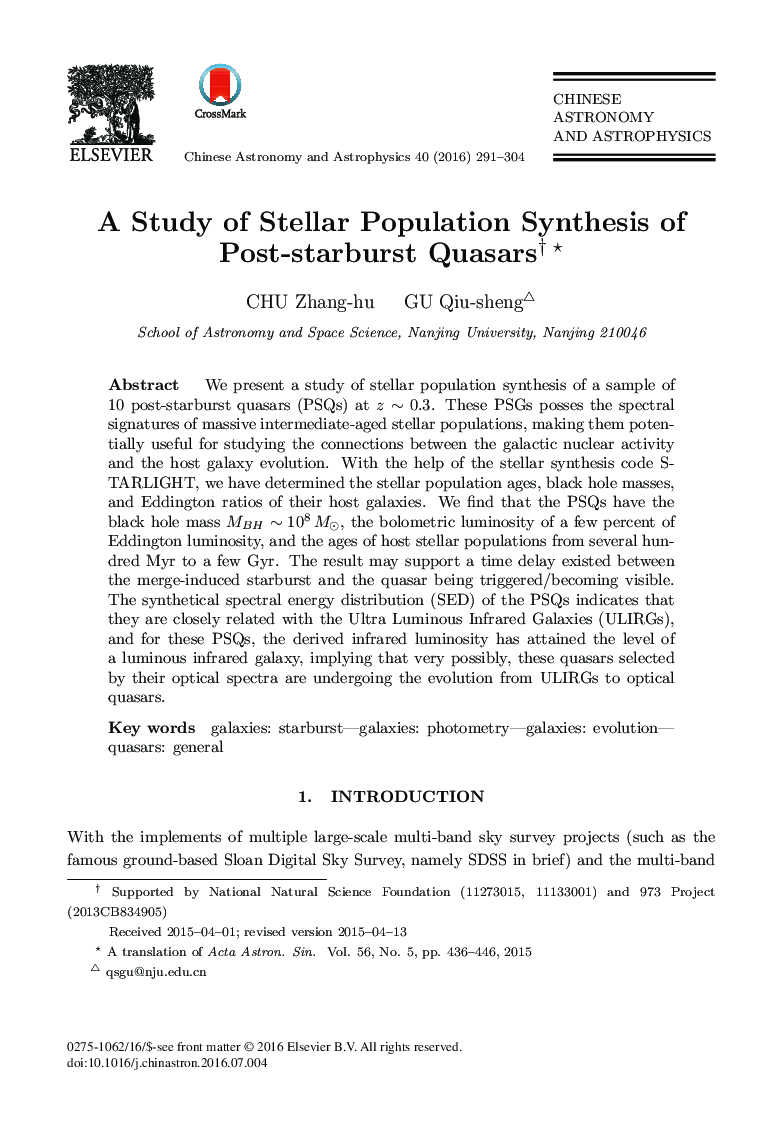| Article ID | Journal | Published Year | Pages | File Type |
|---|---|---|---|---|
| 8133425 | Chinese Astronomy and Astrophysics | 2016 | 14 Pages |
Abstract
We present a study of stellar population synthesis of a sample of 10 post-starburst quasars (PSQs) at z â¼ 0.3. These PSGs posses the spectral signatures of massive intermediate-aged stellar populations, making them potentially useful for studying the connections between the galactic nuclear activity and the host galaxy evolution. With the help of the stellar synthesis code STARLIGHT, we have determined the stellar population ages, black hole masses, and Eddington ratios of their host galaxies. We find that the PSQs have the black hole mass MBH â¼ 108Â Mâ, the bolometric luminosity of a few percent of Eddington luminosity, and the ages of host stellar populations from several hundred Myr to a few Gyr. The result may support a time delay existed between the merge-induced starburst and the quasar being triggered/becoming visible. The synthetical spectral energy distribution (SED) of the PSQs indicates that they are closely related with the Ultra Luminous Infrared Galaxies (ULIRGs), and for these PSQs, the derived infrared luminosity has attained the level of a luminous infrared galaxy, implying that very possibly, these quasars selected by their optical spectra are undergoing the evolution from ULIRGs to optical quasars.
Related Topics
Physical Sciences and Engineering
Physics and Astronomy
Astronomy and Astrophysics
Authors
Chu Zhang-hu, Gu Qiu-sheng,
